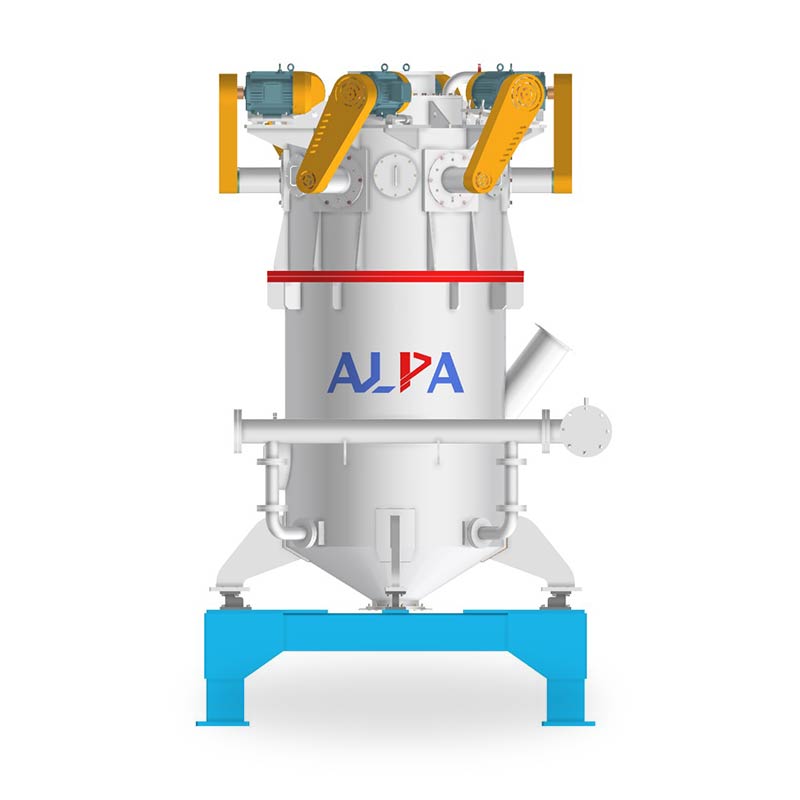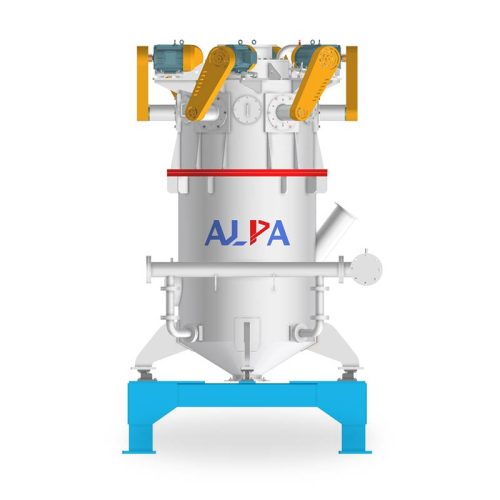The equipment commonly used in the fine pulverization process of lithium battery cathode materials includes jet mill and mechanical mill, which are different in terms of pulverization principle and pulverization effect. According to the material characteristics, select the appropriate crushing equipment and set the optimal process parameters to meet the needs of product indicators, quality, energy consumption, etc.
Jet Mill
After the compressed air is frozen, filtered and dried, it is sprayed by several two-dimensional or three-dimensional nozzles to form a supersonic airflow and injected into the crushing chamber. The impact of the airflow can make the material fluidized. The jet streams of the nozzles meet at the meeting point to produce violent collision, friction, and shearing to achieve ultra-fine crushing of particles. The crushed material is conveyed to the classification area by the rising airflow, and the separation of coarse and fine particles is realized under the action of the centrifugal force of the classifying wheel and the suction force of the fan. The particles enter the cyclone classifier with the airflow for further separation and collection, and the fine powder in the material continues to enter the dust collection system for dust removal.
It can be seen from the jet mill process that the equipment parameters involved include nozzle diameter, feeding amount, crushing pressure, classifying wheel linear speed, and induced air volume, which jointly affect product indicators, quality, and output.
Equipment parameter debugging process:
①Pre-select the nozzle size based on the equipment model and estimated production capacity;
②According to the target particle size of the material, determine the appropriate line speed range (classification wheel speed);
③ Determine the appropriate crushing pressure range according to the characteristics of the material (such as single crystal, polycrystalline, hard bonded, soft bonded particles, etc.), if the crushing pressure is too high, a large amount of fine powder will be produced and it is not easy to be removed;
④According to the production capacity demand, optimize the feeding volume and induced air volume;
⑤ Determine whether to optimize the nozzle diameter according to the production capacity and energy consumption.
Impact Mill
The material is evenly fed into the crushing chamber by the feeding system, and is strongly impacted by the high-speed rotating crushing disc, and at the same time, it is subjected to the action of centrifugal force, collides with the crushing ring gear, and is affected by various comprehensive forces such as shearing, friction, and collision. Crushing, the crushed material moves to the classification area with the airflow, and the coarse and fine materials are separated, and the coarse material returns to the crushing chamber for secondary crushing. The fine particles that meet the particle size requirements enter the cyclone classifier with the airflow for further separation and collection. The fine powder in the material Continue to enter the dust collection system for dust removal.
From the technical process of mechanical milling, it can be seen that the parameters involved in the equipment include the feeding amount, the linear speed of the crushing disc, the linear speed of the grading wheel, and the amount of induced air, which jointly affect product indicators, quality, and output.
The crushing principle of jet mill and impact mill is different, which determines its scope of application, output and energy consumption. Fundamentally speaking, jet mills use supersonic airflow to collide between materials to achieve particle grinding; impact mills use grinding discs to drive materials to hit the grinding column and the inner wall of the grinding chamber to achieve particle grinding.
Impact mills are more suitable for crushing soft cohesive particles (such as polycrystalline). For some hard cohesive single crystal small particles, even when the linear speed of the grinding disc is adjusted to the upper limit, it cannot be crushed. The jet mill can pulverize both soft cohesive particles and hard cohesive particles (such as single crystal), but there are disadvantages in terms of energy consumption and cost.


